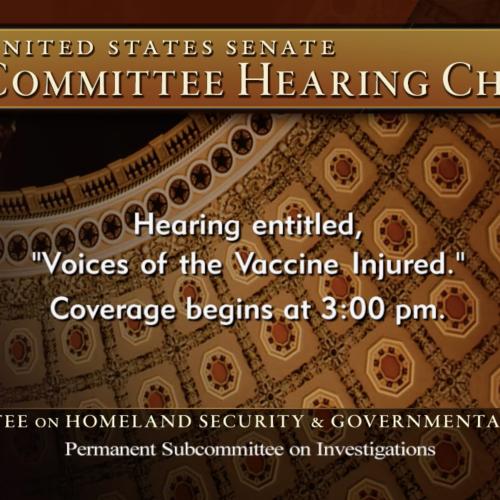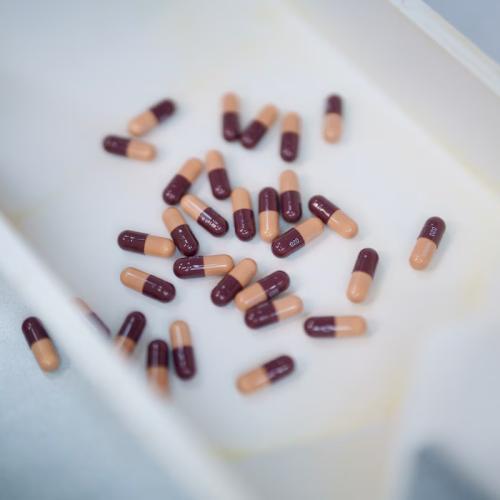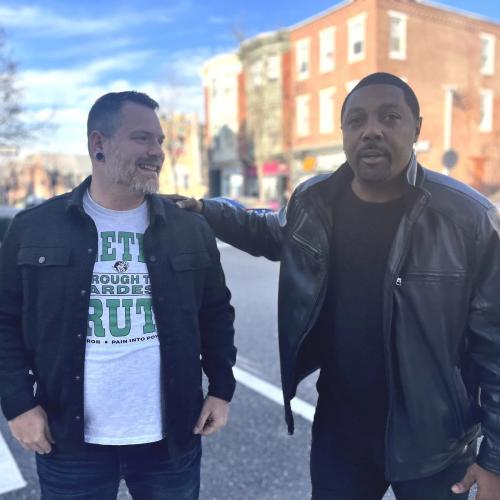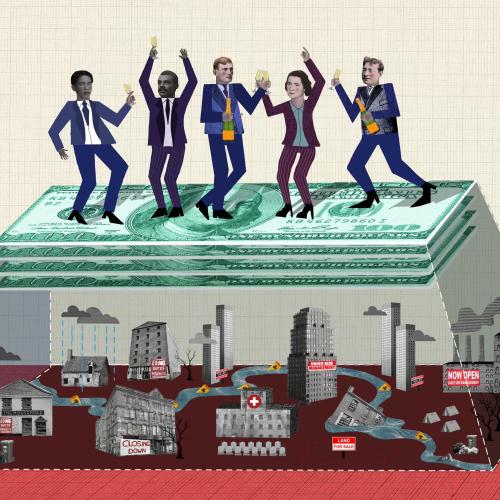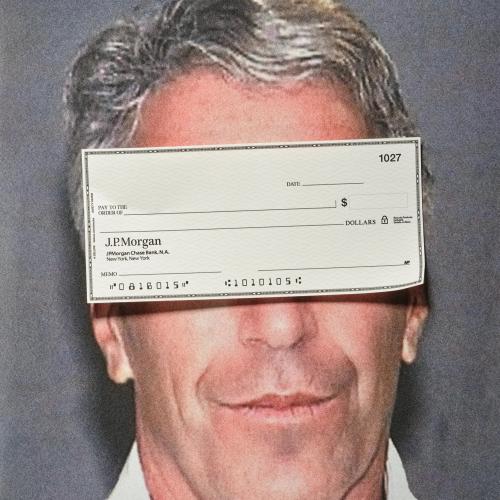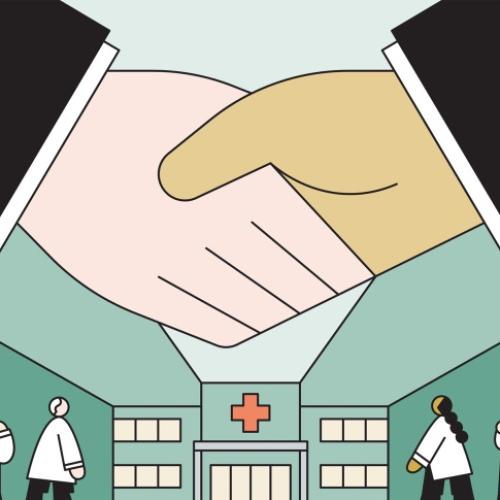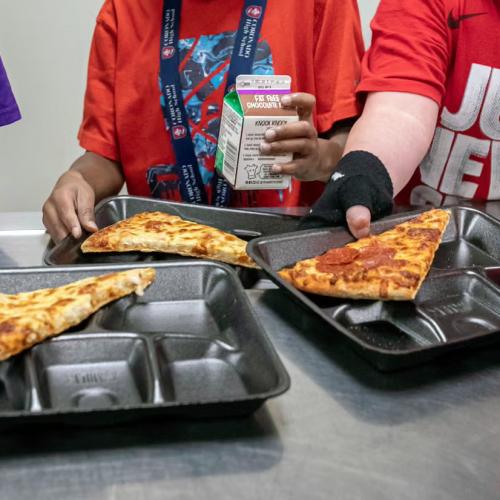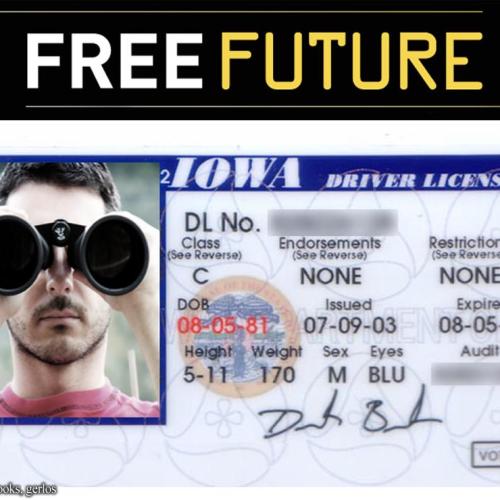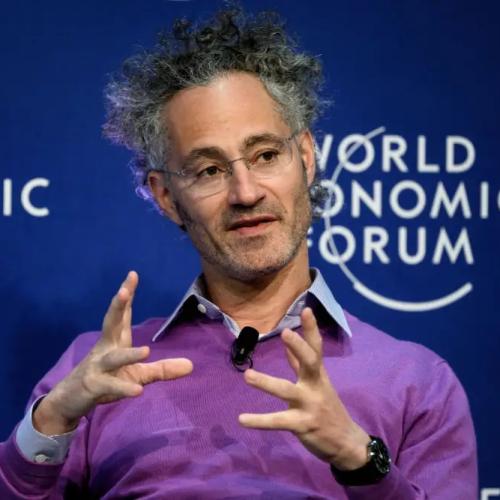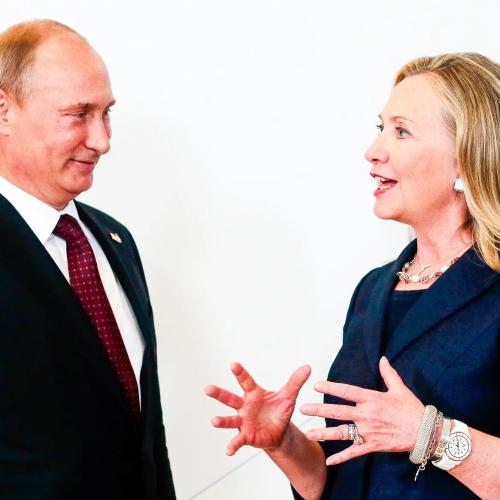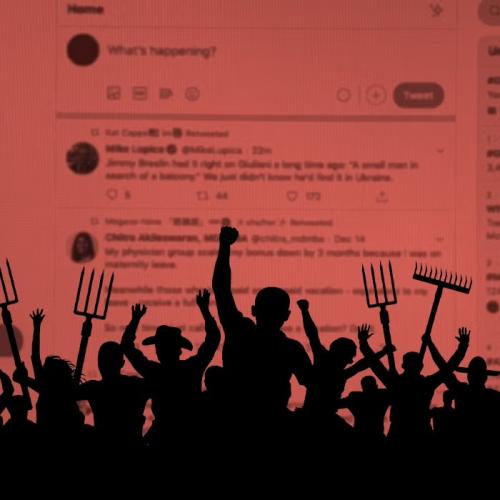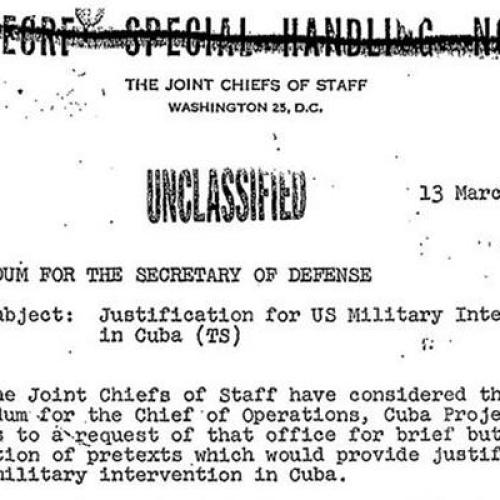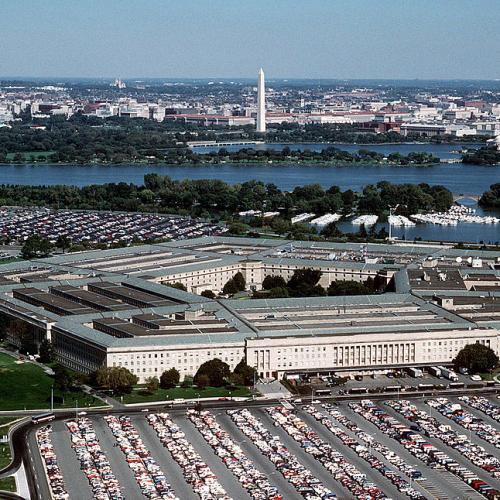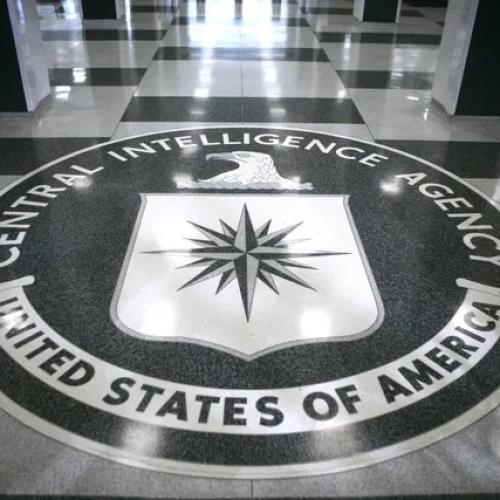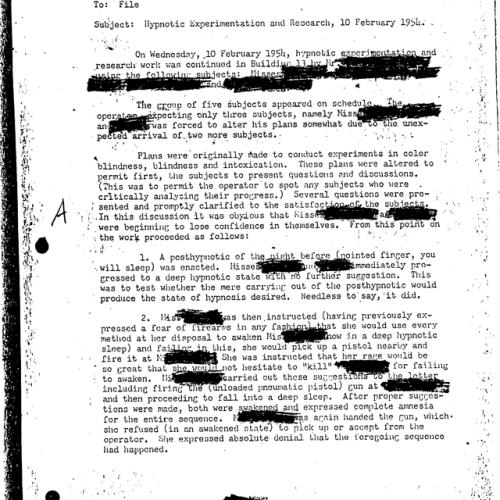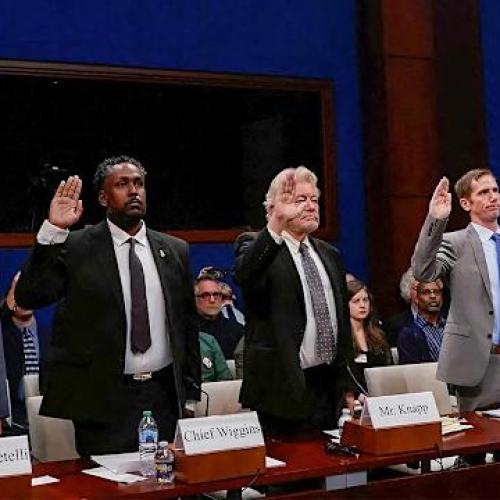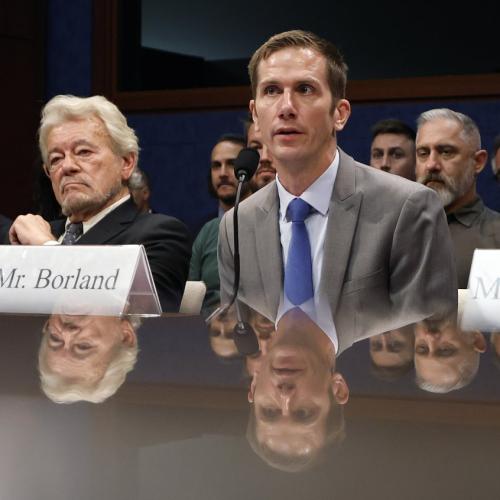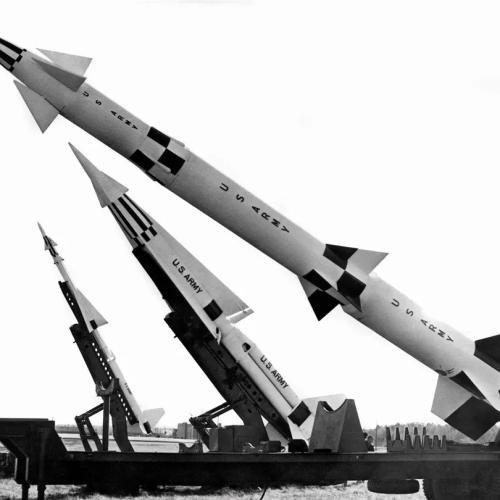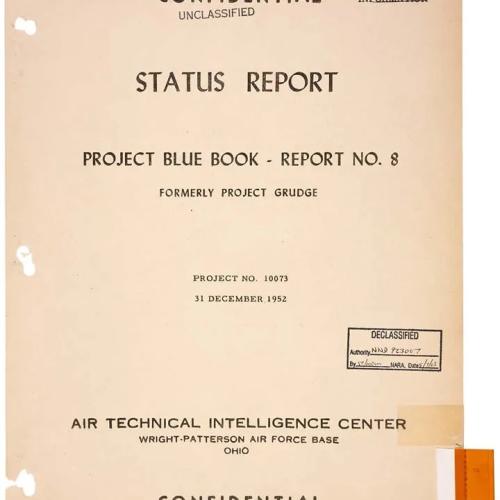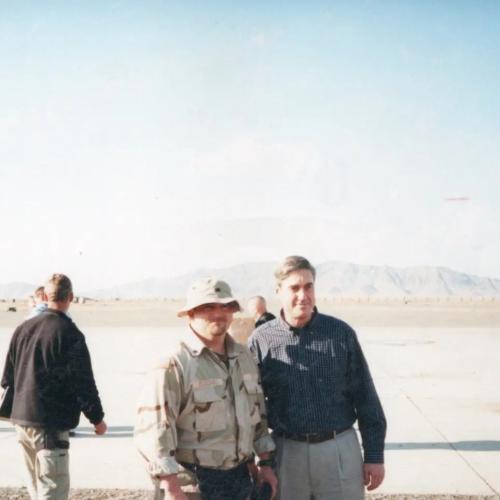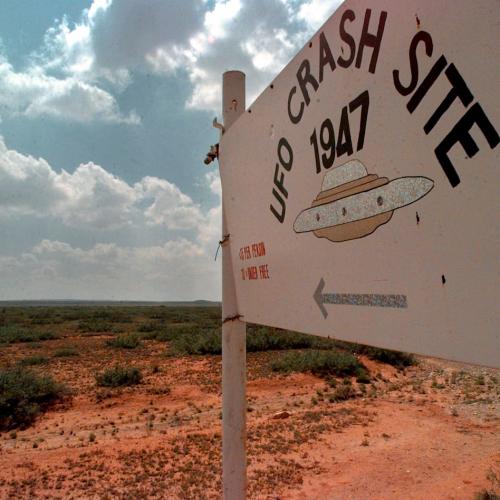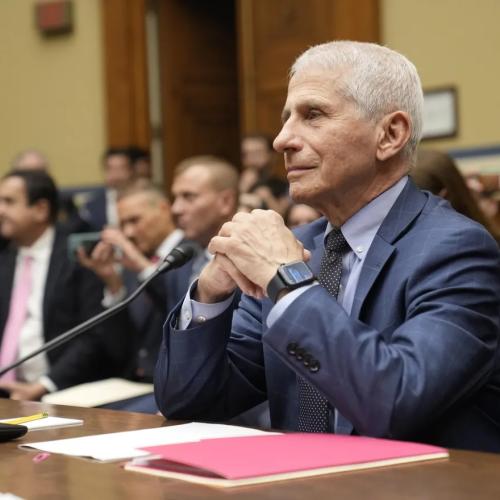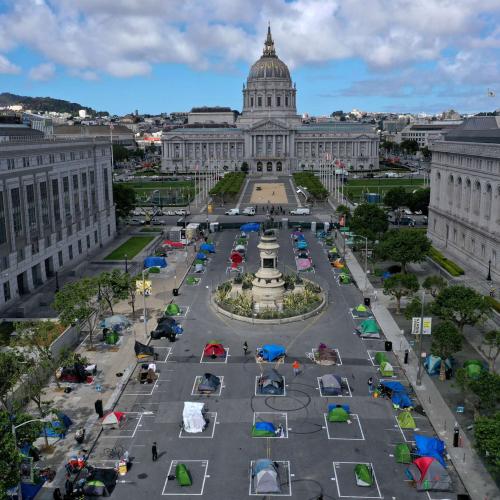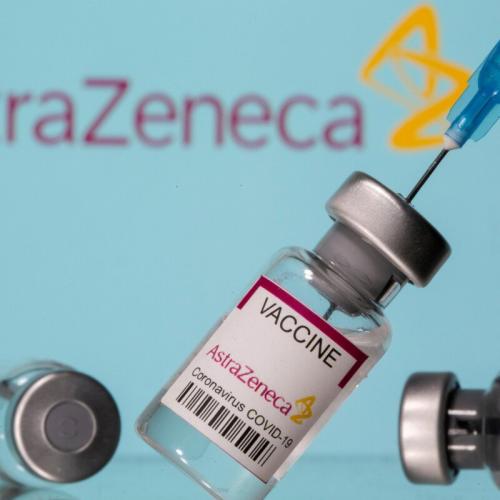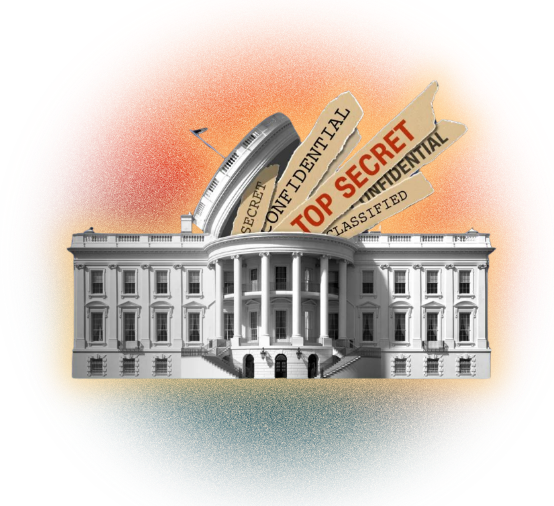War on Drugs News Stories
Over 100,000 lives continue to be lost to drug overdose each year in the US. The War on Drugs is a racket designed to fund covert, black budget US operations and inflate the budgets of law enforcement agencies and the incarceration industry. While the War on Drugs targeted everyday people, this war protected the activities of the rich and powerful: rogue elements within the US government, big banks, Big Pharma, and drug cartels.
THE BIG PICTURE:
Our Mindful News Brief video explores who's really behind the War on Drugs.
Our investigative Substack article investigates the dark truths behind the US war on drugs that the mainstream media ignores.
President Donald Trump’s authorization this week of Central Intelligence Agency operations aimed at toppling Venezuelan President Nicolás Maduro prompted warnings from foreign policy experts. The amount of narcotics entering the United States via the country is relatively insignificant. Approximately 90% of US-bound cocaine enters the country via Mexico, according to the US Drug Enforcement Administration and other government agencies. Venezuela is also not a significant source of fentanyl, which is the leading cause of overdoses in the US and is also trafficked primarily through Mexico.“Using covert or military measures to destabilize or overthrow regimes reminds us of some of the most notorious episodes in American foreign policy, which undermined the human rights and sovereignty of countries throughout Latin America and the Caribbean,” said [policy advisor Matt] Duss. The US has launched at least 41 interventions that successfully overthrew governments in the hemisphere since 1898. Washington has helped install and prop up brutal dictators and assisted in the subversion of democratic movements, including by training Venezuelan forces in torture and repression at the notorious US Army School of the Americas. Tens of thousands of Venezuelans have also died as a result of US economic sanctions on Venezuela, according to research from the Center for Economic and Policy Research. “If Venezuela did not possess oil, gas, gold, fertile land, and water, the imperialists wouldn’t even look at our country,” [Maduro] added.
Note: Read our Substack investigation into the dark truths behind the US War on Drugs. For more along these lines, read our concise summaries of news articles on the War on Drugs.
President Trump is rattling his saber against Colombian President Gustavo Petro to punish him for accusing the U.S. government of murdering Venezuelan fishermen. Trump warned that Petro that he “better close up” cocaine production “or the United States will close them up for him, and it won’t be done nicely.” Is anyone in the Trump White House aware of the long history of U.S. failure in that part of the world? Colombia remains the world’s largest cocaine producer despite billions of dollars of U.S. government anti-drug aid to the Colombian government. The Clinton administration made Colombia its top target in its international war on drugs. Clinton drug warriors deluged the Colombian government with U.S. tax dollars to deluge Colombia with toxic spray. The New York Times reported that U.S.-financed planes repeatedly sprayed pesticides onto schoolchildren, making many of them ill. At the same time that the Clinton administration was sacrificing the health of Colombian children in its quixotic anti-drug crusade ... Laurie Hiett, the wife of Colonel James Hiett, the top U.S. military commander in Colombia, exploited U.S. embassy diplomatic pouches to ship 15 pounds of heroin and cocaine to New York. She pocketed tens of thousands of dollars in narcotic profits. After she was caught and convicted, she received far more lenient treatment than most drug offenders – only five years in prison. Her husband – ridiculed as the “Coke Colonel” in the New York Post – received only six months in prison for laundering drug proceeds and concealing his wife’s crimes.
Note: Aerial spraying of pesticides is labeled as a public-health and anti-drug intervention designed to eradicate coca crops. The War on Drugs has been called a trillion dollar failure that targets everyday people while protecting the covert activities of the rich and powerful. See our in-depth investigation into the dark truths behind the War on Drugs.
Covert action refers to secret operations to influence governments, organizations, or persons in support of a foreign policy in a manner that is not attributable to the United States. Donald Trump has gone a step further than all other presidents by ignoring plausible denial; he announced the “secret” authorization to allow the CIA to conduct covert action in Venezuela against President Nicolas Maduro. This represents the latest attempt to apply pressure on Venezuela. It follows authorization for the U.S. military to target boats that may or may not be carrying drugs. Thus far, five boats have been destroyed and 29 Venezuelans (and some Colombians) have been killed. U.S. covert action, which began under the Eisenhower administration, has been marked by incredible and often predictable failure. The worst failures were in Iran (1953), Guatemala (1954), the Congo 1959, and Chile (1973), where leftist leaders were overthrown only to be followed by the accession to power of authoritarians and tyrants such as the Shah, Julio Alpirez, Mobutu, and Pinochet. These authoritarians introduced brutal regimes and repressive military forces, many of whom received military training from the CIA. When U.S. ambassadors in Central America protested this activity, they were ordered to stop reporting on such criminal activity. The CIA also trained and supported abusive internal security organizations throughout Central America, particularly in Nicaragua, Honduras, and El Salvador.
Note: Learn more about the rise of the CIA in our comprehensive Military-Intelligence Corruption Information Center. For more, read our concise summaries of news articles on intelligence agency corruption.
Some 10,000 American troops are currently supporting the Trump-ordered counternarcotics operations in the Caribbean. At this point the military intervention has killed 27 people, including individuals who are likely not Venezuelan. President Trump's most recent explanation to reporters for this unprecedented Pentagon build-up off Venezuela's coast was surprisingly reminiscent of the failed "war on drugs" which hearkens all the way back to the days of Richard Nixon, when he famously declared it "public enemy number one". There was a time ... where the CIA itself was the biggest narco-trafficker in United States and perhaps the entire Western hemisphere. This was to fund regime change and covert operations in Latin America after a belated Congressional crackdown on taxpayer funding for black ops. In August 1996, the San Jose Mercury News [published a] series of articles linking the CIA’s “contra” army to the crack cocaine epidemic in Los Angeles. During the 1980s the CIA helped finance its covert war against Nicaragua’s leftist government through sales of cut-rate cocaine to South Central L.A. drug dealer, Ricky Ross. The CIA’s drug network, wrote [journalist Gary] Webb, “opened the first pipeline between Colombia’s cocaine cartels and the black neighborhoods of Los Angeles, a city now known as the ‘crack’ capital of the world.” Black gangs used their profits to buy automatic weapons, sometimes from one of the CIA-linked drug dealers.
Note: Though President Richard Nixon launched the War on Drugs by declaring drugs “public enemy No. 1,” secretly he admitted in a 1973 Oval Office meeting that marijuana was “not particularly dangerous.” The War on Drugs is a trillion dollar failure that has been made worse by every presidential administration since Nixon. Don't miss our in-depth investigation into the dark truths behind the War on Drugs. For more along these lines, read our concise summaries of news articles on intelligence agency corruption and the War on Drugs.
The United States has long used drone strikes to take out people it alleges are terrorists or insurgents. President Donald Trump has taken this tactic to new extremes, boasting about lethal strikes against alleged drug boats in the Caribbean and declaring the U.S. is in a “non-international armed conflict” with narcotics traffickers. Trump appears to be merging the war on terror with the war on drugs. This comes as he’s simultaneously ramping up the use of troops to police inside American cities. The modern drug war began during President Richard Nixon’s administration. In 1994, the journalist Dan Baum tracked down Nixon aide John Ehrlichman and interviewed him. He said, “Look. The Nixon campaign in ’68 and the Nixon White House had two enemies: Black people and the antiwar left. [V]ilify them night after night on the evening news, and we thought if we can associate heroin with Black people in the public mind and marijuana with the hippies this would be perfect.” And [Ehrlichman] said, “Did we know we were lying about the drugs? Of course we did.” This line of thinking drove policies designed to “unleash” law enforcement. The Nixon administration tried to relax wiretapping laws, roll back Miranda rights, and erode Fourth Amendment protections against unconstitutional searches and seizures. And now we’re seeing the Trump administration push even harder to roll back constitutional protections.
Note: Though President Richard Nixon launched the War on Drugs by declaring drugs “public enemy No. 1,” secretly he admitted in a 1973 Oval Office meeting that marijuana was “not particularly dangerous.” The War on Drugs is a trillion dollar failure that has been made worse by every presidential administration since Nixon. Don't miss our in-depth investigation into the dark truths behind the War on Drugs. For more along these lines, read our concise summaries of news articles on military corruption and the War on Drugs.
Nearly the entire population of El Guayabo, approximately 400 to 500 dirt-poor lime pickers living on communal land in the west Mexican state of Michoacán, fled hastily in mid-July to escape combat between the Jalisco New Generation Cartel, known as CJNG, and the Caballeros Templarios. Every house were shattered by gunfire, roofs were blown open by bombs dropped from internet-bought drones, and everyone walked nervously, scanning the ground for landmines. Scattered everywhere were thousands of dull bronze shell-casings: .50 caliber rounds for sniper rifles and machine guns, 5.56 rounds for AR-15s and similar rifles, and 7.62×39 shells used for AK-47-style rifles. Putting a stop “to every terrorist thug smuggling poisonous drugs into the United States,” as President Donald Trump put it to the United Nations last week, has become his self-proclaimed mission. If the U.S. military does confront the cartels in Mexico, it will find itself facing battle with its own weapons. An investigation by The Intercept traced the bullets that littered the ground in El Guayabo to at least two U.S. firearms manufacturers, one of which operates a massive factory owned by the U.S. military. Experts estimate that around 200,000 military-grade assault weapons and machine guns are trafficked every year from U.S. gunshops to Mexican criminal groups, moving south across the border. Between 2009 and 2011 ... ATF agents in Arizona allowed cartel straw buyers to purchase nearly 2,000 assault weapons.
Note: The US is effectively providing the means for the cartels to wage their dirty war. Read more about how the US arms Mexican drug cartels. Also, don't miss our in-depth investigation into the dark truths behind the War on Drugs including the long history of the US government arming and financing drug cartels for years. For more along these lines, read our concise summaries of news articles on the War on Drugs.
Seth Harp’s The Fort Bragg Cartel: Drug Trafficking and Murder in the Special Forces [is] an exposé of the criminality and violence carried out by returning Special Forces personnel in American communities. We’re in the middle of a political crisis right now in which the military’s role is being radically expanded, including into US domestic life, all on the basis of fighting crime and drugs, and drugs being a national security threat. Yet ... damaged soldiers end up carrying out crime and violence at home as well as getting involved in the drug trade. Todd Michael Fulkerson, a Green Beret who was trained at Bragg, was convicted earlier this year of trafficking narcotics with the Sinaloa cartel. Another guy, Jorge Esteban Garcia, who was the top career counselor at Fort Bragg for twenty years — his job was to mentor and coach retiring soldiers on their career prospects — was literally recruiting for a cartel and was convicted of trafficking methamphetamine and supporting a violent extremist organization. And then a group of soldiers in the 44th Medical Brigade at Fort Bragg — all these soldiers are at Fort Bragg — were convicted of trafficking massive amounts of ketamine. You can look at every single region of the world that’s a massive drug production center — which there really are not that many of them — and in every case, you can see that US military intervention preceded the country’s becoming a narco state, not the other way around.
Note: Don't miss our in-depth investigation into the dark truths behind the War on Drugs. For more along these lines, read our concise summaries of news articles on military corruption and the War on Drugs.
Since 1971, the U.S. has spent more than a trillion dollars on the war on drugs, prioritising law enforcement responses and fuelling mass incarceration within its borders. It has also played a leading role in pushing and funding punitive responses to drugs internationally. This has continued despite clear evidence that such approaches don’t work to achieve their stated aims (ending drug use and sales) while having devastating effects on rights and health, including mass criminalisation, disease transmission, repression and displacement. The U.S. government spends more on international “counternarcotics” activities than it does on education, water supply, sanitation, and women’s rights in low- and middle-income countries: Almost $13 billion of U.S. taxpayer money has been allocated to “counternarcotics” activities internationally since 2015. This amount is more than the U.S. government spent over that decade on primary education or water supply and sanitation in low- and middle-income countries. Funding meant to end global poverty is going to “counternarcotics” activities. A growing amount of this “counternarcotics cash” has even come from the same U.S. official development assistance budgets that are supposed to help end global poverty. Funding for “narcotics control” and “counternarcotic activities” has resulted in human rights abuses, rising HIV rates, aerial fumigation with toxic chemicals, and militarised responses in various regions.
Note: Don't miss our in-depth investigation into the dark truths behind the War on Drugs. For more along these lines, read our concise summaries of news articles on health and the War on Drugs.
Klaus Barbie, the notorious Nazi war criminal known as the "Butcher of Lyon," managed to escape justice for decades, living under a false identity in Bolivia until his arrest in 1983. Barbie worked for Western intelligence services and adopted the alias Klaus Altmann in South America. In Bolivia, he became the chief security adviser to Roberto Suárez, one of the world’s most powerful drug traffickers. Barbie’s success with Suárez brought him new clients, including dictator Luis García Meza, who seized power in 1980 with the backing of cocaine barons. Barbie, hailed as the ideological architect of Bolivia’s “Cocaine Coup,” was awarded the rank of lieutenant colonel in the Bolivian army and granted immunity for his actions. He helped Meza set up death squads and served as Bolivia’s de facto intelligence chief. New revelations stem from recently declassified CIA cables from 1974, which show that agency operatives suspected Barbie of involvement in the drug trade — including possible links to Colombian drug lord Pablo Escobar. Barbie was reportedly recruited by the CIA. His role in aiding drug cartels was allegedly part of a broader U.S. effort to prevent leftist regimes from taking power in Bolivia — as had happened in Cuba — by bolstering military dictatorships. This cooperation is believed to have allowed Barbie to evade extradition to France for years. When he was finally captured, the U.S. formally apologized to France for helping him flee.
Note: Read our Substack on the dark truth behind the war on drugs. For more, explore our information on Operation Paperclip, where more than 1,500 Nazis were secretly embedded in the US scientific community and intelligence establishment.
Da Ying “David” Sze walked out of a four-story concrete warehouse in Queens, New York, carrying several bags full of money. Federal agents had been surveilling him for months. They suspected him of leading a gang of money launderers whose clients included Chinese fentanyl dealers. Most of that business had been conducted at one institution: TD Bank. When investigators looked closer at the bank, they realized Sze wasn’t the only criminal who’d made TD their depository of choice. There was the group from Manhattan’s Diamond District using bogus gold sales to launder money. The Colombian drug traffickers using TD debit cards to bring their US profits back home. And the human trafficking ring that claimed to be an HVAC company when it opened an account. The more investigators looked at TD, the more money laundering they found. Last year, TD’s American subsidiary became the first US bank ever to plead guilty to conspiracy to commit money laundering. The company agreed to pay $3.1 billion in fines to various parts of the federal government, a sum that included the biggest penalty ever levied by the Department of Justice under the Bank Secrecy Act, the main US anti-money-laundering law. More than two dozen people, including three bank employees, have already been charged. US authorities have also imposed an asset cap on TD’s American retail operations, limiting their size indefinitely. This is among the most feared punishments in banking.
Note: Read our Substack on the dark truth about the war on drugs. For more along these lines, read our concise summaries of news articles on financial industry corruption and the war on drugs.
Since 1999, more than 800,000 Americans have died from opioid overdoses. The latest headlines focus on fentanyl, yet the staggering toll can be traced to the widespread availability of opioid pills made possible by decades of overprescribing. Few users start with fentanyl. Experts date the start of the opioid epidemic to within three years of the approval of OxyContin in 1995. Reports from emergency departments across the US showed Purdue’s pills were being crushed and injected or snorted as early as 1997. “My eyes popped open,” recalls one FDA medical officer of seeing the reports. “Nobody wanted to see it for what it was. You would’ve had to have your head in the sand not to know that there was something wrong.” By 2000, Purdue was selling $1.1 billion annually in OxyContin. Higher doses led to higher profit. Sales reps were coached accordingly. In five years, oxycodone prescribing had surged 402%, and hospital emergency room mentions of oxycodone were up 346%. By 2012, OxyContin sales were almost $3 billion annually. And many other companies were cashing in. In the preceding six years, 76 billion opioid pills had been produced and shipped across the US, as the FDA faced a national crisis of epic proportions. In the 2010s, the US, with less than 5% of the global population, was consuming 80% of the world’s oxycodone. And with coordinated pharmaceutical campaigns to destigmatize opioids, brands other than Purdue’s and Roxane’s benefited.
Note: Read our Substack on the dark truth of the war on drugs. Read how Congress fueled this epidemic over DEA objections. For more along these lines, read our concise summaries of news articles on government corruption and Big Pharma profiteering.
Last Tuesday, former president of the Philippines Rodrigo Duterte was arrested in Manila and taken to the Hague, where he will be tried for crimes against humanity at the International Criminal Court. From 2016-2022, Duterte’s government carried out a campaign of mass killings of suspected drug users. It’s estimated that 27,000 people, most of them poor and indigent, were executed without trial by police officers and vigilantes at his behest. Children were also routinely killed during Duterte’s drug raids- both as collateral victims and as targets. While this happened, the United States provided tens of millions of dollars annually to both the Philippine military and the Philippine National Police. Many of the killings examined by [Human Rights Watch] followed a pattern: a group of plainclothes gunmen would enter the home of a suspected drug user, kill them without ever issuing an arrest, and plant drugs or weapons next to the body. Sometimes the gunmen would self-identify as police officers, and other times they would not. Police would also detain suspected drug users without charges and torture them for bribes. Less than a month after Duterte took office, then- Secretary of State John Kerry announced a $32 million weapons and training package specifically to support the Philippine National Police. Obama’s administration authorized $90 million in military aid to the Philippines in 2016 and roughly $1 billion during the 8 years he was in office.
Note: Read our Substack on the dark truth of the war on drugs. For more along these lines, read our concise summaries of news articles on the war on drugs.
The countless victims of former Philippine President Rodrigo Duterte’s bloody war on drugs are celebrating his arrest on charges of crimes against humanity as a momentous first step toward justice. Many of those who financed, enforced, and even continued in his state-sponsored killing campaign have not been held accountable. That list includes U.S. presidents Donald Trump and Joe Biden, and current Philippine President Ferdinand Marcos Jr. The Philippines remains one of the largest recipients of U.S. military aid in the Indo-Pacific region. In 2018 and 2024, two international people’s tribunals in Brussels brought together families of victims of extrajudicial killings in the Philippines under both the Duterte and Marcos administrations. Both tribunals ... found the Trump and Biden administrations complicit in heavily funding state-sponsored killings in the Philippines. The killings targeted not only drug users, but also dissidents and activists as well. Duterte established, and Marcos beefed up and continued, the National Task Force to End Local Communist Armed Conflict, or NTF-ELCAC, which immediately weaponized the Philippines civilian bureaucracy to go after government critics and activists on the grounds that they were fronts for the Communist Party of the Philippines. With no due process, activists under Duterte and Marcos continued to be systematically killed, illegally arrested, and targeted by state forces, even going as far as to be subjected to abduction, torture, and forced to sign affidavits claiming to be captured guerrillas.
Note: Read our Substack on the dark truth of the war on drugs. For more along these lines, read our concise summaries of news articles on the war on drugs.
For decades, the United States Agency for International Development (USAID) has been unaccountable to taxpayers as it funnels massive sums of money to the ridiculous — and, in many cases, malicious — pet projects of entrenched bureaucrats, with next-to-no oversight. Here are only a few examples of the WASTE and ABUSE: $1.5 million to “advance diversity equity and inclusion in Serbia’s workplaces and business communities”; $70,000 for production of a “DEI musical” in Ireland; $47,000 for a “transgender opera” in Colombia; $32,000 for a “transgender comic book” in Peru; $2 million for sex changes and “LGBT activism” in Guatemala; $6 million to fund tourism in Egypt; Hundreds of thousands of dollars for a non-profit linked to designated terrorist organizations — even AFTER an inspector general launched an investigation; Millions to EcoHealth Alliance — which was involved in research at the Wuhan lab, Hundreds of thousands of meals that went to al Qaeda-affiliated fighters in Syria; Funding to print “personalized” contraceptives birth control devices in developing countries; Hundreds of millions of dollars to fund “irrigation canals, farming equipment, and even fertilizer used to support the unprecedented poppy cultivation and heroin production in Afghanistan,” benefiting the Taliban. The list literally goes on and on — and it has all been happening for decades.
Note: USAID may have funded the creation of COVID-19 and has funneled billions into Ukraine. Could it be that this organization is a front for an intelligence agency? For more along these lines, read our concise summaries of news articles on government waste.
Drugs were the elephant in the room during the failed U.S. war in Afghanistan. Because opium was such a large part of the poor and war-torn country's economy, the fighting between the Taliban and the U.S.-backed Afghan republic often looked more like a turf war between rival narco gangs, with the U.S. military protecting some opium fields and bombing others. Afghan farmers were happy to take USAID's help while continuing to grow opium. For example, opium cultivation increased by 119 percent in the Kandahar Food Zone between 2013 and 2015, after USAID helped expand the irrigation systems there. A USAID-funded charity in Kenya allegedly covered up rampant sex abuse of children, and USAID funded a second charity in the Central African Republic a month after a major sex abuse scandal broke. The Children of God Relief Institute, which ran an orphanage for Kenyan children affected by AIDS and similar projects, received high praise from the U.S. government. From 2013 onward, USAID gave the institute $29.3 million. In 2021, a whistleblower told USAID that the charity was harboring a dark secret. USAID's inspector general soon determined that Children of God Relief Institute officials "knew or should have known of multiple incidents" of child sex abuse "but failed to take effective remedial measures to address the abuse." In some cases, the victims were forced to apologize for provoking their own abuse, The Washington Post reports.
Note: Watch our latest video on government waste, where we take a thoughtful look at the current political landscape and explore powerful solutions that have the potential to tackle wasteful spending and restore financial freedom. For more along these lines, read our concise summaries of news articles on the war on drugs.
On Friday, March 8, former Honduran President Juan Orlando Hernández was convicted on three counts of drug trafficking and weapons conspiracy in a Manhattan federal court. Extradited to the United States shortly after completing his second presidential term in 2022, the 55-year-old Hernández is up against a mandatory minimum sentence of 40 years in jail. US Attorney General Merrick Garland accused Hernández of having run Honduras as a “narco-state where violent drug traffickers were allowed to operate with virtual impunity”. Hernández was until very recently a good chum of successive US administrations, which appointed him a vital ally in the so-called “war on drugs” and flung money at Honduras accordingly. The messianically right-wing leader came to power five years after the 2009 US-facilitated coup d’état against Manuel Zelaya. The fabricated pretext for the coup ... was that Zelaya was scheming to remain president of Honduras in violation of the constitutional one-term limit. Later this limit was quickly dispensed with in order to enable the continued reign of Hernández. Post-election protests triggered a characteristically lethal response from Honduran security forces, which didn’t stop the US from continuing to fund those very same forces. The CIA’s narco-operations have spanned the globe from Pakistan to Laos to Venezuela, while many an international narco-politician has – like Hernández – found at least fleeting favour with the US government.
Note: Read our Substack on the dark truth of the war on drugs. For more along these lines, read our concise summaries of news articles on intelligence agency corruption.
In 2016, Flaviu Georgescu was found guilty and sentenced of attempting to traffic weapons to the Revolutionary Armed Forces of Colombia, an insurgent group on the U.S. terror list. But when he was arrested by Drug Enforcement Administration agents, he told the officials he was working for the CIA. The majority of defendants in post-9/11 terrorist cases had no actual ties to terrorism or to terrorist organizations. Many were caught in FBI stings, where informants posed as terrorists often crossing the line into encouraging and even facilitating crimes that would otherwise not have occurred. As the war on terror has waned, the DOJ has shifted its focus, with its agencies – including the DEA – now targeting people for similar sting operations on allegations of involvement in so-called “narcoterrorism.” The FBI ... would identify someone who was espousing views that might be sympathetic to those organizations, or even an attack, and they would encourage that person to get involved. Some of the targets of investigations were very financially desperate. The FBI, through the informant, would dangle the opportunity to make money. In those cases, the vast majority of people have no connections to real terrorist groups, they have no access to weapons. And the FBI provides everything. A bomb, grenades, automatic rifles ... guns that would be very difficult to obtain, even by sophisticated criminals. When the defendant goes about to use the weapon, they’re arrested, and they’re charged, and announced to the public as a terrorist who was about to get involved in this very deadly plot were it not foiled by the FBI. The Intercept [documents] these cases through Trial and Terror. We’ve seen hundreds of these cases involving sting operations since 9/11. What this has done ... in the post-9/11 era, was really exaggerate the threat of terrorism from within Muslim communities in the United States. And, on the news, it really made the public think that the threat of terrorism within the United States from these communities was much, much greater than it really was.
Note: The FBI has had a notorious history of manufacturing terrorist plots, often targeting vulnerable minors who have significant cognitive and intellectual disabilities yet no history of harming anyone. For more along these lines, read our concise summaries of news articles on intelligence agency corruption.
The US Central Intelligence Agency and other international security forces “don’t fight drug traffickers”, a spokesman for the Chihuahua state government in northern Mexico has told Al Jazeera, instead “they try to manage the drug trade”. “It’s like pest control companies,” Guillermo Terrazas Villanueva, the Chihuahua spokesman, [said]. “If you finish off the pests, you are out of a job.” Under the Merida Initiative, the US Congress has approved more than $1.4bn in drug war aid for Mexico, providing attack helicopters, weapons and training for police and judges. “It’s true, they want to control it,” a mid-level official with ... Mexico’s equivalent to the US Department of Homeland Security, told Al Jazeera of the CIA and DEA’s policing of the drug trade. Jesús Zambada Niebla, a leading trafficker from the Sinaloa cartel currently awaiting trial in Chicago, has said he was working for the US Drug Enforcement Agency during his days as a trafficker, and was promised immunity from prosecution. “Under that agreement, the Sinaloa Cartel under the leadership of [Jesus Zambada’s] father, Ismael Zambada and ‘Chapo’ Guzmán were given carte blanche to continue to smuggle tonnes of illicit drugs into the United States, and were protected by the United States government from arrest and prosecution in return for providing information against rival cartels,” Zambada’s lawyers wrote as part of his defence. “Indeed, the Unites States government agents aided the leaders of the Sinaloa Cartel.”
Note:The US helped arm and finance the Sinaloa cartel for decades, which was barely covered in the American media. For more, read our Substack on the dark truth of the war on drugs.
In 2017, the drug industry middleman Express Scripts announced that it was taking decisive steps to curb abuse of the prescription painkillers that had fueled America’s overdose crisis. Why hadn’t the middlemen, known as pharmacy benefit managers, acted sooner to address a crisis that had been building for decades? One reason, a New York Times investigation found: Drugmakers had been paying them not to. For years, the benefit managers, or P.B.M.s, took payments from opioid manufacturers, including Purdue Pharma, in return for not restricting the flow of pills. As tens of thousands of Americans overdosed and died from prescription painkillers, the middlemen collected billions of dollars in payments. The P.B.M.s exert extraordinary control over what drugs people can receive and at what price. The three dominant companies — Express Scripts, CVS Caremark and Optum Rx — oversee prescriptions for more than 200 million. The P.B.M.s are hired by insurers and employers to control their drug costs by negotiating discounts with pharmaceutical manufacturers. They often pursue their own financial interests in ways that increase costs for patients, employers and government programs, while driving independent pharmacies out of business. Regulators have accused the largest P.B.M.s of anticompetitive practices. In addition ... P.B.M.s sometimes collaborated with opioid manufacturers to persuade insurers not to restrict access to their drugs.
Note: A former DEA agent has said that Congress helped drug companies create the opioid epidemic. Read how pharmacy benefit managers inflate the price of medications behind the scenes. For more along these lines, read our concise summaries of news articles on Big Pharma corruption.
Twenty years ago this month, on December 10, 2004, former San Jose Mercury News investigative reporter Gary Webb died by apparent suicide. Webb had left the newspaper in 1997 after his career was systematically destroyed because he had done what journalists are supposed to do: speak truth to power. In August 1996, Webb penned a three-part series ... that documented how profits from the sale of crack cocaine in Los Angeles in the 1980s had been funneled to the Contras, the right-wing, CIA-backed mercenary army responsible for helping to perpetrate [a] large-scale terrorist war against Nicaragua. At the same time, the crack epidemic had devastated Black communities in South Central LA—which meant that Webb’s series generated understandable uproar among Black Americans. Webb was subjected to a concerted assault by the corporate media, most notably the New York Times, Washington Post and LA Times, as detailed in a 1997 intervention by FAIR’s Norman Solomon. The media hit job relied heavily on denials from the CIA itself—as in “CIA Chief Denies Crack Conspiracy.” In December 1997, the same month Webb left the Mercury News after being discredited across the board and abandoned by his own editors, the New York Times reassured readers that the “CIA Says It Has Found No Link Between Itself and Crack Trade.” Leading media outlets ... buried or obstructed news suggesting Contra-cocaine links.
Note: Read more about journalist Gary Webb. Learn more about the dark truth behind the US war on drugs. For more, read our concise summaries of news articles on war on drugs.
Important Note: Explore our full index to revealing excerpts of key major media news stories on several dozen engaging topics. And don't miss amazing excerpts from 20 of the most revealing news articles ever published.















